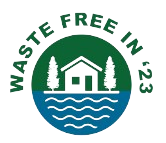By Serio et al., 2016
Read the full paper here
Introduction
Managing human waste in space is a major challenge for long-term space missions, such as those planned by NASA for Mars exploration. Traditional waste management systems are not feasible in space due to limited storage, energy restrictions, and the need for safety. This study explores torrefaction, a process that heats waste at temperatures between 200–250°C without oxygen, to safely and efficiently manage human waste in space.
How Torrefaction Works
Torrefaction is a mild thermal process that removes moisture, sterilizes the material, and produces a dry, stable solid that does not decompose. It also:
- Kills harmful bacteria, making waste safer to handle.
- Eliminates odors, improving air quality in space habitats.
- Shrinks waste volume by up to 50%, reducing storage needs.
- Extracts water, which can be reused for other purposes in space.
Economic and Environmental Benefits
1. Cost Savings & Resource Efficiency
- Reduces waste disposal costs: Storing and transporting waste on space missions is expensive. Torrefaction minimizes the amount of waste that needs to be handled.
- Water recovery: Extracting water from waste means astronauts need to bring less water from Earth, reducing launch costs.
- Reusability: The torrefied waste can be turned into radiation shielding, insulation, or even fuel, maximizing resources.
2. Sustainability & Environmental Impact
- Reduces reliance on Earth resources: Recycling waste into useful materials ensures that space missions can be self-sustaining.
- Minimizes energy use: Torrefaction operates at relatively low temperatures, requiring less energy than traditional incineration.
- Creates a circular waste system: Instead of treating waste as garbage, this method transforms it into valuable resources for long-duration missions.
Future Applications
While NASA is developing torrefaction for space missions, the process could also be useful on Earth:
- For disaster relief camps: Where managing human waste is difficult.
- In remote areas with limited sanitation: Providing a low-energy way to process waste.
- For sustainable agriculture: The solid material produced from torrefaction can be used as biochar, improving soil fertility.
Conclusion
Torrefaction offers a smart, energy-efficient way to handle human waste in space, turning a challenge into an opportunity. By reducing waste volume, recovering water, and creating useful byproducts, this method improves sustainability for long-term missions while also having potential applications on Earth.
Got questions?
